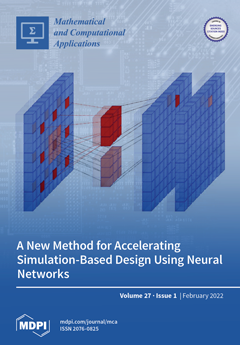A spline-based integral approximation is utilized to define a sequence of approximations to the error function that converge at a significantly faster manner than the default Taylor series. The real case is considered and the approximations can be improved by utilizing the approximation
for
and with
optimally chosen. Two generalizations are possible; the first is based on demarcating the integration interval into
m equally spaced subintervals. The second, is based on utilizing a larger fixed subinterval, with a known integral, and a smaller subinterval whose integral is to be approximated. Both generalizations lead to significantly improved accuracy. Furthermore, the initial approximations, and those arising from the first generalization, can be utilized as inputs to a custom dynamic system to establish approximations with better convergence properties. Indicative results include those of a fourth-order approximation, based on four subintervals, which leads to a relative error bound of 1.43 × 10
−7 over the interval
. The corresponding sixteenth-order approximation achieves a relative error bound of 2.01 × 10
−19. Various approximations that achieve the set relative error bounds of 10
−4, 10
−6, 10
−10, and 10
−16, over
, are specified. Applications include, first, the definition of functions that are upper and lower bounds, of arbitrary accuracy, for the error function. Second, new series for the error function. Third, new sequences of approximations for
that have significantly higher convergence properties than a Taylor series approximation. Fourth, the definition of a complementary demarcation function
that satisfies the constraint
. Fifth, arbitrarily accurate approximations for the power and harmonic distortion for a sinusoidal signal subject to an error function nonlinearity. Sixth, approximate expressions for the linear filtering of a step signal that is modeled by the error function.
Full article





